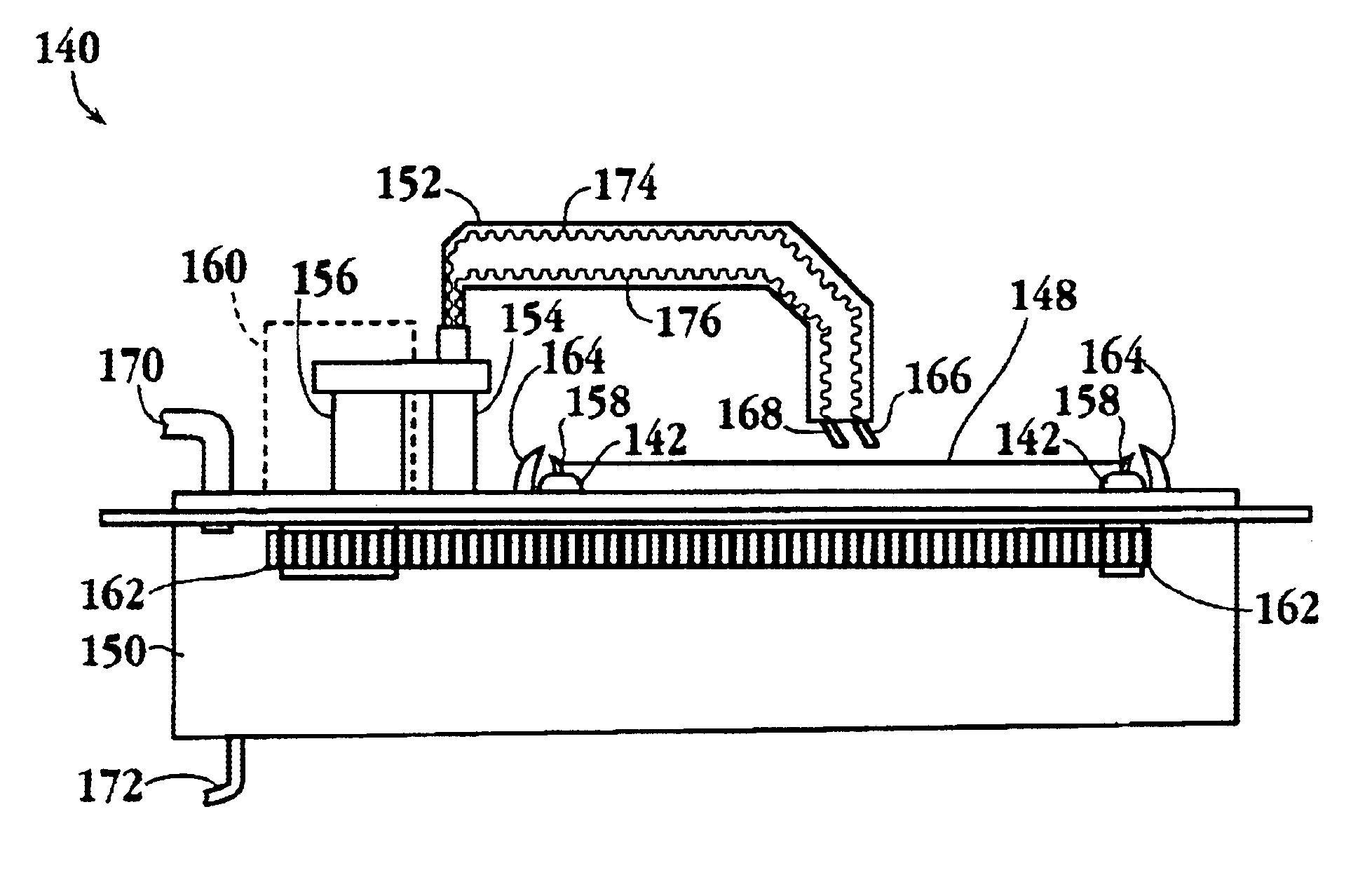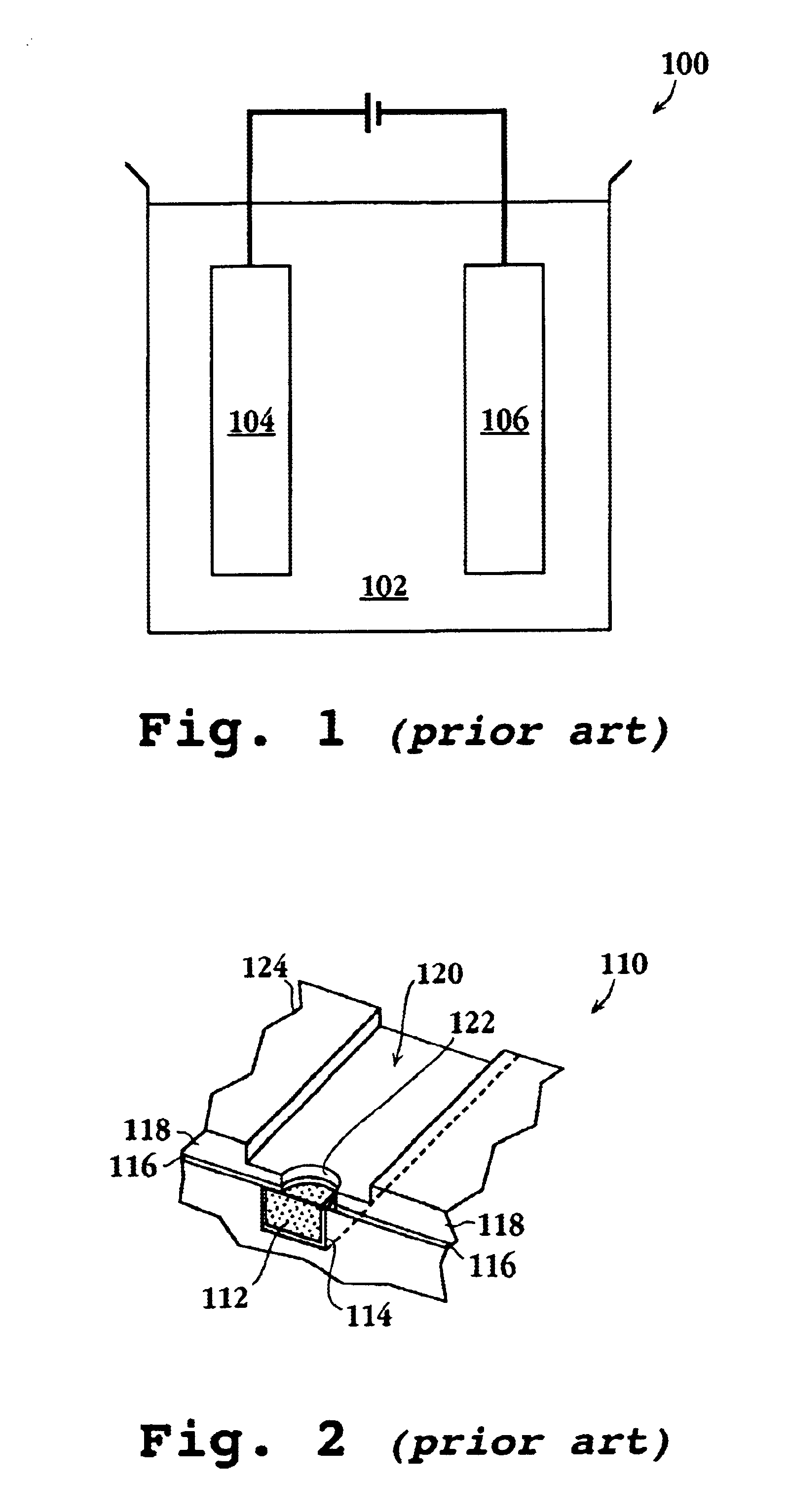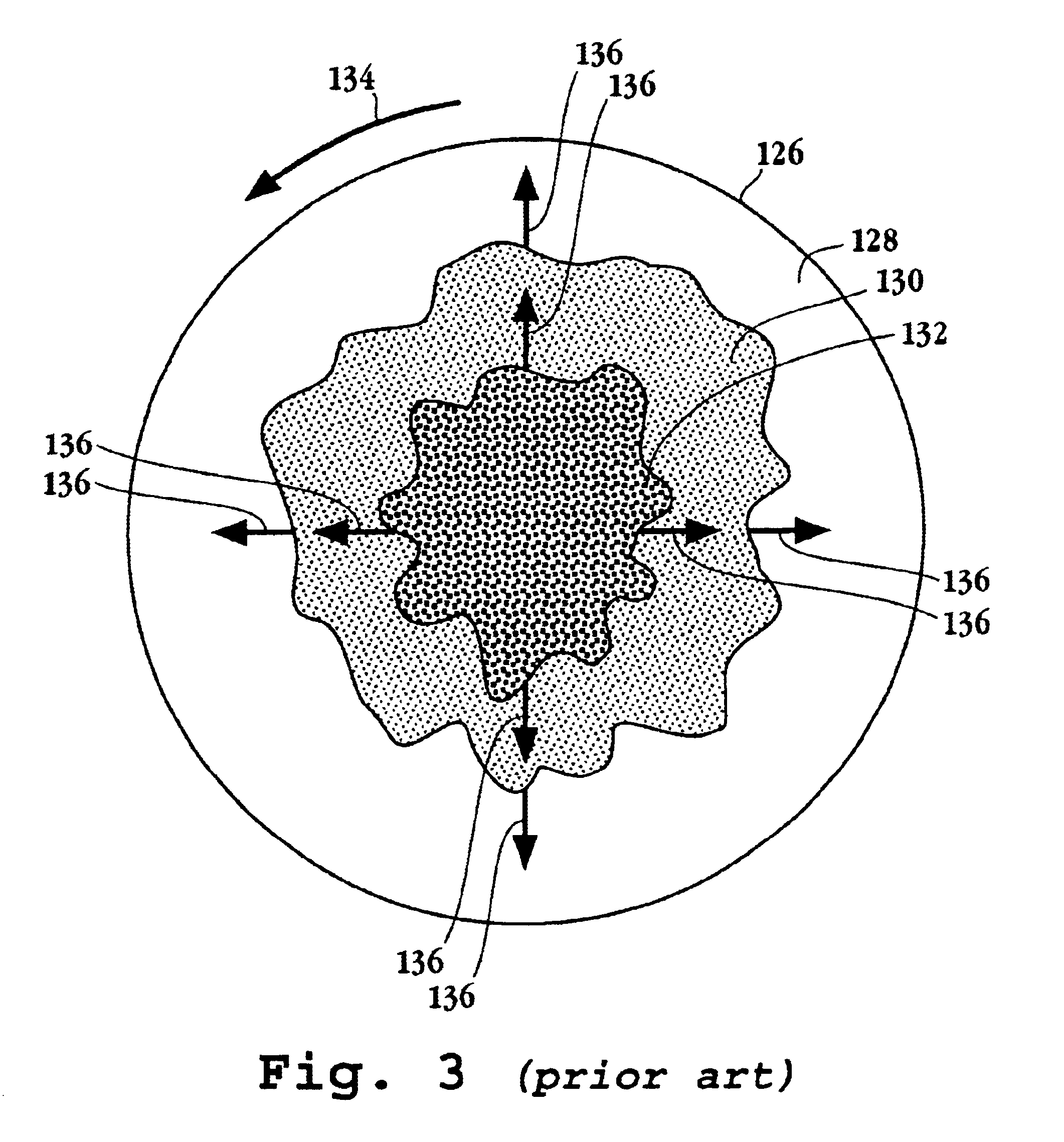Method for controlling galvanic corrosion effects on a single-wafer cleaning system
a cleaning system and cleaning method technology, applied in the direction of cleaning process and apparatus, cleaning using liquids, chemistry apparatus and processes, etc., can solve the problems of more susceptible substrates to galvanic corrosion, so as to reduce the exposure of semiconductor substrates to corrosion, effectively remove residues, and minimize galvanic corrosion effects
- Summary
- Abstract
- Description
- Claims
- Application Information
AI Technical Summary
Benefits of technology
Problems solved by technology
Method used
Image
Examples
Embodiment Construction
An invention is described which provides a method and apparatus for removing a cleaning chemistry from the surface of a semiconductor substrate without exposing the substrate to corrosion effects during a single-wafer cleaning operation. In addition, the method and apparatus provide a more effective means for removing the residue during cleaning operations without increasing the consumption of the cleaning chemistry. It will be obvious, however, to one skilled in the art, that the present invention may be practiced without some or all of these specific details. In other instances, well known process operations have not been described in detail in order not to obscure the present invention.
The embodiments of the present invention provide a method and apparatus for applying and removing a cleaning agent from a semiconductor substrate without exposing the substrate to galvanic corrosion effects. In one embodiment, the precisely formulated cleaning chemistry applied to the semiconductor...
PUM
| Property | Measurement | Unit |
|---|---|---|
| time | aaaaa | aaaaa |
| concentration | aaaaa | aaaaa |
| surface tension | aaaaa | aaaaa |
Abstract
Description
Claims
Application Information
 Login to View More
Login to View More - R&D
- Intellectual Property
- Life Sciences
- Materials
- Tech Scout
- Unparalleled Data Quality
- Higher Quality Content
- 60% Fewer Hallucinations
Browse by: Latest US Patents, China's latest patents, Technical Efficacy Thesaurus, Application Domain, Technology Topic, Popular Technical Reports.
© 2025 PatSnap. All rights reserved.Legal|Privacy policy|Modern Slavery Act Transparency Statement|Sitemap|About US| Contact US: help@patsnap.com



